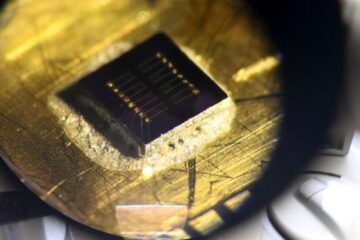Catching smugglers with ‘guilt’ technology

Dr Hassan Ugail, Head of Visual Computing Research at the University of Bradford’s School of Informatics, is part of a team working on a £500,000 project to develop technologies that would assist the border control agencies in identifying people trying to smuggle contraband goods or narcotics through customs.
The project, which starts in December 2008 and will last over two years, also involves Dr Reyer Zwiggelaar from the University of Aberystwyth and is being funded by the Engineering and Physical Sciences Research Council (EPSRC). The research team will also collaborate closely with the Home Office, HM Revenue & Customs and leading international defence and security technology company QinetiQ.
The main aim of the project is to develop technology that can profile people as they pass through border controls to help security agencies identify smugglers. If implemented, the ideal outcome would be to increase identification of smugglers and decrease the amount of contraband and drugs entering the UK.
The technology will use a technique called ‘real-time dynamic passive profiling’ based on the modelling of facial expressions, eye movement and pupil changes in both the visual and thermal terms. This will then link to malicious intent and physiological processes such as blood flow, eye movement patterns and pupil dilation.
Dr Ugail explains: “What we are proposing to develop is essentially a passive lie detector. We aim to automatically analyse peoples’ facial expressions and eye movements in response to a series of questions through video images and computer-based intelligent algorithms.
“For example, trained officers at the border control points are very good in spotting people carrying contraband by simply analysing their facial expressions in response to questions but it is tricky to teach a machine to do this.
“However, some smugglers can be very good actors who can easily hide their emotions. That’s why we aim to extend this study to other non-visual domains such as the use of thermal imaging to study facial blood flow which is extremely hard to control.”
If successful, this work has a potential remit beyond border control applications. For example, the system could be used for police interrogations and interview scenarios. “Who knows – it could even be used to enhance our real-time computer gaming experiences,” added Dr Ugail.
Media Contact
More Information:
http://www.bradford.ac.uk/corpcomms/pressreleasesAll latest news from the category: Information Technology
Here you can find a summary of innovations in the fields of information and data processing and up-to-date developments on IT equipment and hardware.
This area covers topics such as IT services, IT architectures, IT management and telecommunications.
Newest articles

Sea slugs inspire highly stretchable biomedical sensor
USC Viterbi School of Engineering researcher Hangbo Zhao presents findings on highly stretchable and customizable microneedles for application in fields including neuroscience, tissue engineering, and wearable bioelectronics. The revolution in…

Twisting and binding matter waves with photons in a cavity
Precisely measuring the energy states of individual atoms has been a historical challenge for physicists due to atomic recoil. When an atom interacts with a photon, the atom “recoils” in…

Nanotubes, nanoparticles, and antibodies detect tiny amounts of fentanyl
New sensor is six orders of magnitude more sensitive than the next best thing. A research team at Pitt led by Alexander Star, a chemistry professor in the Kenneth P. Dietrich…





















